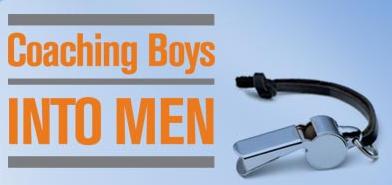 TeenNow California would like to thank Sarah Pritchard from Futures Without Violence for today’s guest blog.
TeenNow California would like to thank Sarah Pritchard from Futures Without Violence for today’s guest blog.
Coaching Boys into Men – Violence Doesn’t Equal Strength
It happened in Steubenville – could it happen in your community?
Coaches, educators, and parents across the country are asking themselves that question, as the graphic details of what occurred one night at an alcohol-fueled party in Steubenville, OH come to light.
Beyond the shock of this horrific incident, many of us are also asking why. Why didn’t one of the other young people at the party that night do something? And what can we all be doing to better equip the young people in our lives with the skills and vocabulary they need to stand up and speak out when they witness disrespectful or abusive behavior among their peers?
As coaches and educators, you know that winning games or memorizing multiplication tables aren’t always the most important lessons you teach in your work with young people. As Coaching Boys into Men champion and retired North Dakota high school football coach Mike Berg (2007 NFL High School Coach of the Year) recognizes “if we’re only teaching them how to play the sport, we are failing them big time.”
Like many others, Coach Berg understands that athletic coaches, teachers, and other adult mentors play an influential role in the lives of young people. Because of this relationship, adult mentors are uniquely poised to positively influence how young people think and behave.
Futures Without Violence’s program Coaching Boys into Men (CBIM) is an evidence-based violence prevention program that equips high school athletic coaches to talk with their male athletes about the importance of building healthy and respectful relationships. Administered over the course of a typical athletic season, the CBIM curriculum is easily integrated into coaches’ schedules. The curriculum guides coaches on how to build strong character and promote positive bystander behavior and non-violence in young men through philosophies associated with teamwork, sportsmanship, integrity, and respect.
Including violence prevention programs like CBIM in sports, in the classroom, and in other afterschool activities is crucial in the face of incidents like the Steubenville rape case and statistics that show 1 in 3 adolescent girls in the United States is a victim of physical, emotional or verbal abuse from a dating partner[1] and one in five young women ages 18 – 24 report having experienced forced sex[2]. Coaches and educators across the country are seeing this as a call to action, as violence prevention programs continue to grow and expand across the country.
No matter your title, everyone has a role to play in helping to prevent sexual and dating violence by talking with young people about the importance of building respectful, healthy relationships. Beyond implementing a violence prevention program in your school or afterschool program, here are a few simple tips for talking with young people about these issues:
- Encourage open, honest and thoughtful reflection. Talk openly with young people about healthy relationships. Allow them to articulate their own values and expectations. Rather than dismissing ideas as “wrong”, encourage debate – this helps young people come to their own understandings.
- Take a clear stand. Make sure the young people in your life know how you feel about disrespect, use of abusive or inappropriate language, controlling behavior, or other forms of violence.
- Take advantage of “teachable moments”. Use TV episodes, movies, music lyrics, news, and community events as opportunities to start a conversation about healthy and unhealthy relationships.
- Discuss how to be an “upstander”. Teach the young people in your life how to stand up for their peers when they witness unhealthy or abusive behavior.
- Accentuate the positive. Conversations about relationships do not need to focus solely on risky behavior or negative consequences. Conversations should also address the positive, respectful behavior that promotes healthy adolescent development and relationships.
- Get to know your local resources. When questions come up that you can’t answer, or when a young person discloses abuse, it’s important to be prepared with the appropriate resources to refer them to. There are experts in your community trained to respond to these situations. Get to know your local domestic violence or sexual assault resource center and don’t hesitate to call them when you have questions.
For more information on Coaching Boys into Men, visit www.CoachesCorner.org. To learn more about the violence prevention programs available in schools and afterschool settings, including a model school policy on teen dating violence, visit http://www.startstrongteens.org/resources.
[1] Davis, Antoinette, MPH. 2008. Interpersonal and Physical Dating Violence among Teens. The National Council on Crime and Delinquency Focus. Available at http://www.nccd-crc.org/nccd/pubs/2008_focus_teen_dating_violence.pdf.
[2] National Survey of Family Growth, 2002. Centers for Disease Control and Prevention. Available at http://www.cdc.gov/nchs/nsfg.htm
About our blogger:
Sarah does great work on public education campaigns and programs for our colleagues at Futures Without Violence. Working alongside coaches, educators, and advocates from across the country, Sarah has experience mobilizing communities to raise awareness of and prevent violence against women. Sarah has worked directly with organizers from across the country to adapt and implement Coaching Boys into Men in their communities, and has substantial experience in the realm of engaging men in preventing violence against women. In addition, Sarah also works on That’s Not Cool, a public education campaign that engages teens in promoting healthy and respectful relationships.
Prior to her work with Futures Without Violence, Sarah served in AmeriCorps, organizing a food pantry in Brooklyn, New York. Sarah holds a BA from Mount Holyoke College. She is also a dancer and arts educator.